Top Workday Training Institutes in Bengaluru near me
Workday Adaptive Planning Course
Importing and Mapping Data in Workday Adaptive Planning
Workday Adaptive Planning Course in Bengaluru sessions explains the process of employing Workday Adaptive Planning, one of the most important tasks is to import and map data appropriately.
To begin with, a model of the data is downloaded into the sheet, followed by collecting the data to be used for analysis.
Workday Adaptive Planning not only requires correct mapping but also provides reminders to ensure it is done properly.
If something goes wrong, the incorrect account or level is promptly rectified. Mapping dimensions in Workday Adaptive Planning is straightforward.
It is important to ensure that each account is properly matched to purchasing and that each level has the appropriate access.
If access is not assigned to a certain level, Workday Adaptive Planning will indicate the issue, ensuring it is corrected before proceeding.
Treating Cube Sheets and Establishment Reports
After completing the data import and mapping, the process continues with the cube sheet in Workday Adaptive Planning.
As the data progresses through January, February, and March, reports are generated based on the hub category of the product, such as the color filters.
The importance of verifying that the colors are correctly mapped before generating reports is emphasized in the Workday Adaptive Planning Course in Bengaluru.
It must also be ensured that, if needed, gender properties for sales representatives are properly mapped.
Generating Norm Reports in Workday Adaptive Planning
The creation of reports through Workday Adaptive Planning redefines the entire process. By accessing the reporting section, numbers are added, and information such as units of goods sold and price is selected.
The process is simplified by dragging and dropping accounts into the cube sheet.
The Workday Adaptive Planning system supports the integration of multiple data sources into a single report.
Separate sheets are reviewed to integrate accounts and obtain a complete picture.
Assembling required reports whether for sales revenue or reasons behind sales increases is always straightforward.
Augmenting Report Views
The adaptation of reports in Workday Adaptive Planning enhances overall effectiveness. Reports are typically framed to expand the entire hierarchy by default, so users are not required to navigate each section manually.
This eliminates unnecessary intermediate steps, resulting in a streamlined reporting experience.
Workday Adaptive Planning Course in Bengaluru equips users with practical know-how on managing the hierarchies efficiently.
Workday Adaptive Planning introduces a hierarchy management feature that allows selection of the reporting structure.
Once insights are arranged for a broader view, all levels become visible on the screen, simplifying and enhancing the data analysis process.
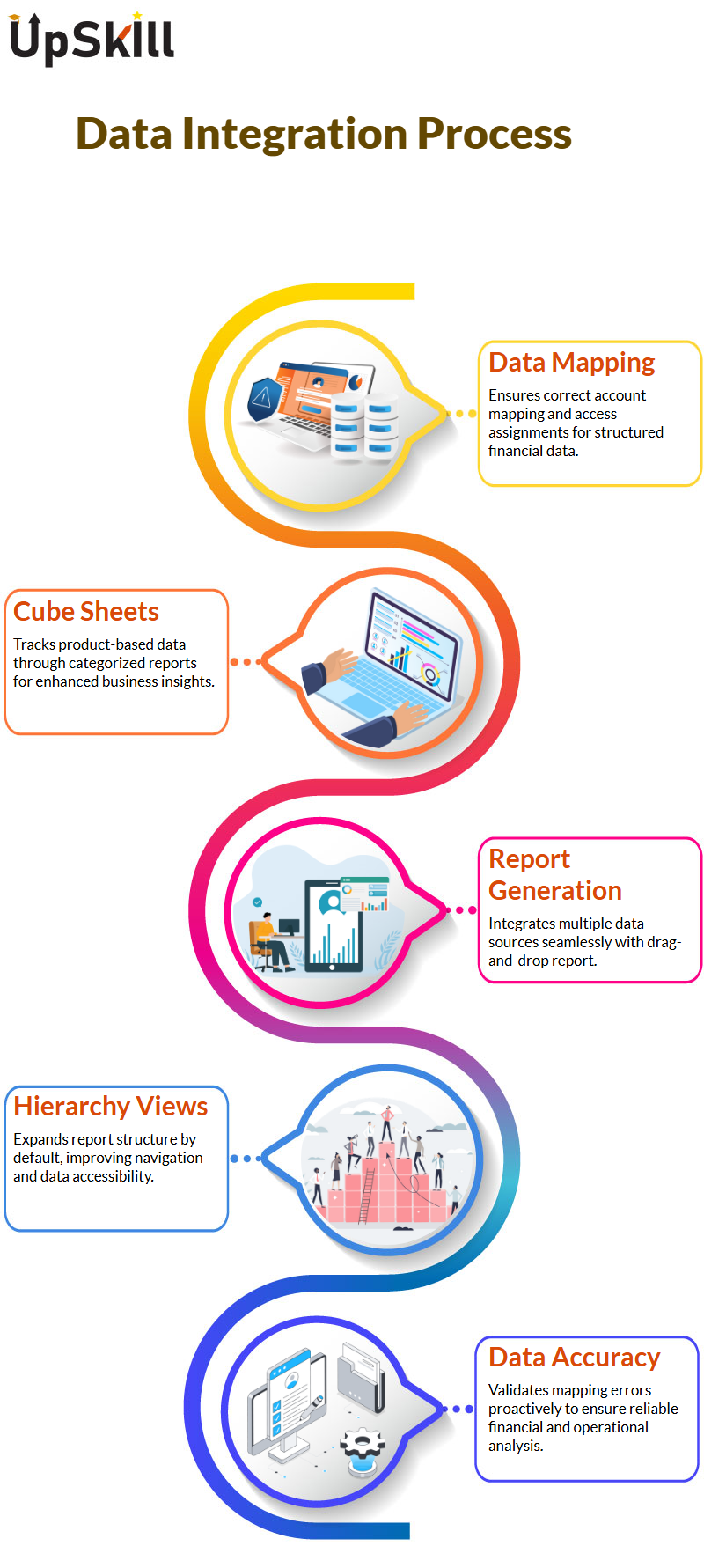
Receiving Facts through Workday Adaptive Planning
Did it ever strike you why data visibility always seemed to be a variable depending on one’s permission level?
In Workday Adaptive Planning, if, for case, your access is restricted, you may see only certain stores that are relevant to your work.
Your access is locked down and thereby your reports reflect what you are allowed to see only, creating data security and integrity.
Access to reports is the fertile ground for security issues appearing again and again but in Workday Adaptive Planning, security is an intrinsic part of the process Sheets and reports are always aligned and thereby easy to control access on all fronts.
Taking such an organized plan would be a great way to avoid data sharing that has not been granted the imperative permission and, at the same time, keep transparency in line with the set boundaries.
Pursuing the Data in Workday Adaptive Planning
A prominent function of Workday Adaptive Planning is its drill-down feature. It enables users to access detailed report data by utilizing properties such as product color, sales representatives, and gender.
Here is a typical situation: suppose it is necessary to examine sales based on different colors. By clicking the ‘color product’ button, the statistics are instantly divided into categories, presenting sales data in a clearer and more interpretable format.
This method is both important and effective, as it provides the required data for subsequent transactions and helps eliminate many, if not all, instances of uncategorized values.
With concepts covered in the Workday Adaptive Planning Course in Bengaluru, using Workday Adaptive Planning ensures that a direct correspondence between attributes leads to accurate data classification.
If the backend captures product details correctly, the resulting reports will display progress in a clear and meaningful manner.
Refining Reports with Workday Adaptive Planning
The Workday Adaptive Planning system division helps you to segment data and undividedly in case you want a split aside on the basis of the distribution of sales representatives, just select the acceptable dimension and the report will in a cork of a moment generate the data handed out by contributors Agnes and Julie.
Comforting to the same manner given the analysis must be turned into a brisk process All you have to do is filter by gender and that will immediately show you the effort of the male and the female employees.
These crystal-perspicuous discernment are helpful for organizations to get the hang of how they can make elevated data-based conclusions.
Workday Adaptive Planning for Smarter Business Analysis
The dimensions and properties in Workday Adaptive Planning have a key impact on the effectiveness of reporting.
Also, the inclusion of full data in the product gives the business structured analysis and enforces that the standard deviations are reduced.
The lack of all-encompassing details in a report often leads to poor analytical clarification.
Through the Workday Adaptive Planning Course in Bengaluru, users can understand how capturing the correct product type, employee details, and customer demographics helps Workday Adaptive Planning convert that data into a useful report.
This type of capability authorizes the company to build their own views based on the explicit necessities, so that the reports are always substantial and feasible.

Customizing Workday Adaptive Planning Reports
Users can take advantage of the ability to refine reports instantly and efficiently by adding traits and dimensions in Workday Adaptive Planning.
Using filters (e.g., color or gender) streamlines data analysis through automatic report updates.
To view detailed sales performance segmented by gender, simply matching the available attribute (gender) ensures the report structure aligns accordingly.
The initial view is designed to make data across levels, stores, and representatives more informative.
Including dimensions such as sales representatives also clarifies individual contributions. These methods can be easily adopted by users to construct complete reports without a complex setup.
Workday Adaptive Planning Segments
Workday Adaptive Planning not only authorizes us to easily generate assorted segments but also enables us to control them productively.
One of the most important steps in the setup of a new segment is the correct determination of the levels that will safeguard that data operating flows with ease.
The possibility of rearranging report elements through drag and drop is a prominent trait in Workday Adaptive Planning which is clearly explained if you join Workday Adaptive Planning Course in Bengaluru.
Customizing Reports in Workday Adaptive Planning
Reports in Workday Adaptive Planning can be easily made-to-order. A blank sheet decline to show any data by default unless there are calculations of course.
The amendment of formulas in the cube sheet is the mechanism that makes relevant data values appear in reports.
If required, changing calculated accounts can help in both truthfulness and ease of use.
Redesigning Workday Adaptive Planning Data
The refresh function in Workday Adaptive Planning enriches data visibility. The refresh function performs the task of adding new accounts or modifying formulas smoothly that assure the most recent status.
Furthermore process is clearly observed if you wish to join Workday Adaptive planning course in Bengaluru.
The report-structure process is made easy by the drag and drop of the elements in Workday Adaptive Planning, and it becomes simple even for the new users.
Currency Configuration within the bounds of Workday Adaptive Planning Normally, Workday Adaptive Planning takes USD as the currency of the base.
Conversely, we are free to change this if we need to use localized reports that are verifying employees are seeing data in their respective currencies.
Proper arrangement of the currency levels permits hassle-free incorporation of automatic alterations without manual metamorphoses.
Cutting-edge Capacity of Workday Adaptive Planning
Workday Adaptive Planning comes with the capability of adding, creating ceremony formulas, and employing percentage-based calculations.
In the Workday Adaptive Planning Course in Bengaluru, users learn how the formula assistant approves them to develop personalized calculated columns which enrich data analysis in the reports.
Inclusion of subtotals, differences, and ceremony calculations extended improves the sympathy of financial and planning transactions.
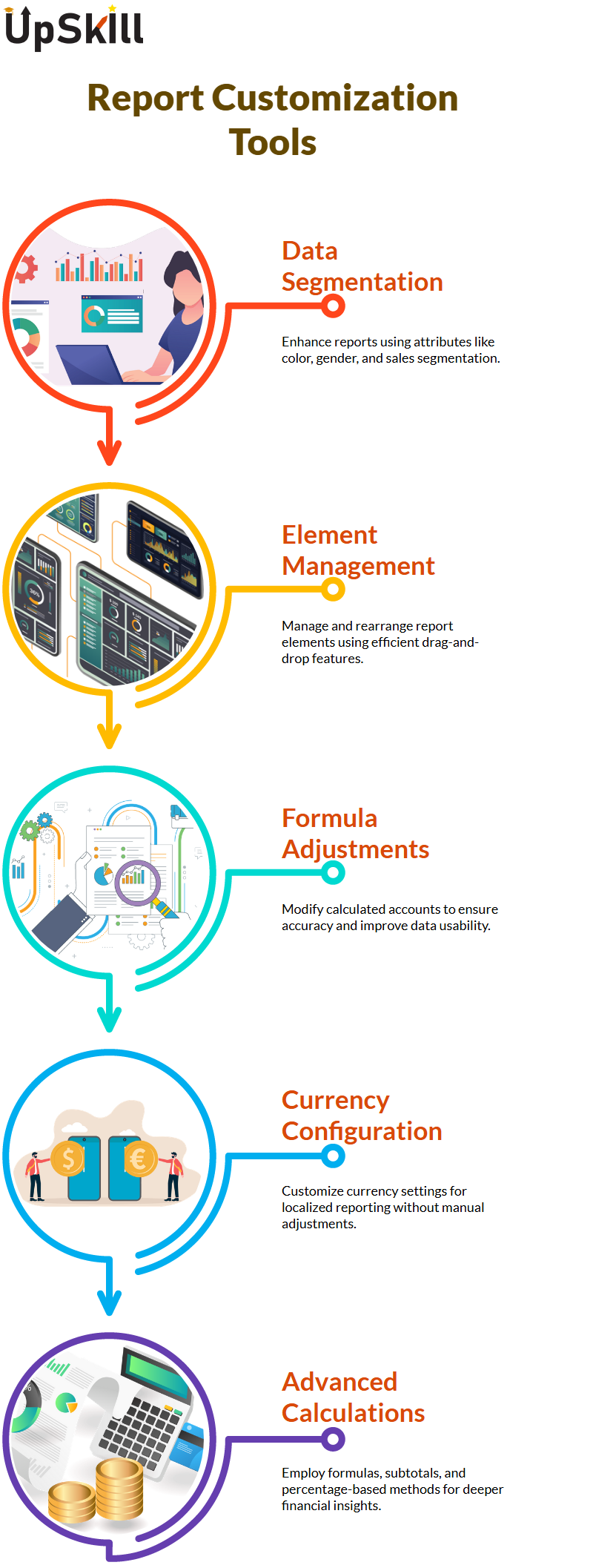
Perfecting Workday Adaptive Planning
Workday Adaptive Planning is able to provide multiple reporting custom-tailoring which consists of subtotal calculations and the use of percentages to display the data.
Users can easily do the following drag and drop the features, levels, and accounts to optimize the process of structuring the report while saving a lot of time.
By entering more operations, the system plates will be completely exploited by users of Workday Adaptive Planning.
Workday Adaptive Planning Account Structures
In case you are working with geo accounts, metric accounts, ritual accounts, or assumption accounts, these accounts would be placed in a cube model or model sheet so that there would be usability for them or they can be withdrawn from the system.
Workday Adaptive presents the flexibility to choose the account structures entry in cube sheets.
Nonetheless, the performance of the tab is not present in a model sheet which is to say cube sheets offer a more straightforward way of adding account type like ceremony and general ledger accounts while the same in model sheets needs a different way of doing things.
Account Structures in Workday Adaptive Planning
Making use of the Workday Adaptive Planning tool to set up the accounting structures keeps the cost of upkeeping a small financial model down.
Workday Adaptive Planning Course in Bengaluru offers deep insight into cube sheet setup and account customization.
The Cube sheets come with a series of solutions standard accounts, calculated accounts, assumption accounts, and metric accounts.
The software has the assurance of having the latest resources that are required for the financial plan.
Through Workday Adaptive Planning, it is possible to add general ledger and ritual accounts into the cube sheets.
This detail gives the user the ability to individualize the account structure according to the enterprise’s business mandates, facilitating smooth integration with the financial planning process.
Workday Adaptive Planning for Financial Statements
Workday Adaptive Planning is involved in earning financial statements (e.g. profit and loss statements, balance sheets, and cash flow reports) into a coherent form.
These worksheets are very popular and are used for the best financial reporting.
When developing a financial model, it is indispensable to follow a certain plan prescribed by Workday Adaptive Planning.
There are three major steps in this method. Initially, the decision on what type of a sheet will be used in the financial planning process lays the groundwork. Greater, the application of a suitable account structure is required to be made.
Importing Accounts in Workday Adaptive Planning
Workday Adaptive Planning automates account import to avoid red tape. A user in need of new data can easily get it from the models.
Try this link for more solutions if you want to import models without a protraction and also check the import section for some more details.
Moreover, the process of accounts import always permits the participation of superficial providers of account structures through standard import routines.
In case a new set of account structures is imperative, users have the ability to download templates, complete accounts, and later, import them into the system fluently.
Revenue and Sales Accounts for Workday Adaptive Planning
Workday Adaptive Planning is a key tool in the prediction of revenue and sales accounts whereby actuals come from systems such as EBS; it is essential to undertake proper account mapping for right projections.
With cube sheets the Workday Adaptive Planning tool makes the whole process simple. Therefore, model sheets will need to be manually linked to the accounts, which in turn will lead to more elaborate planning.
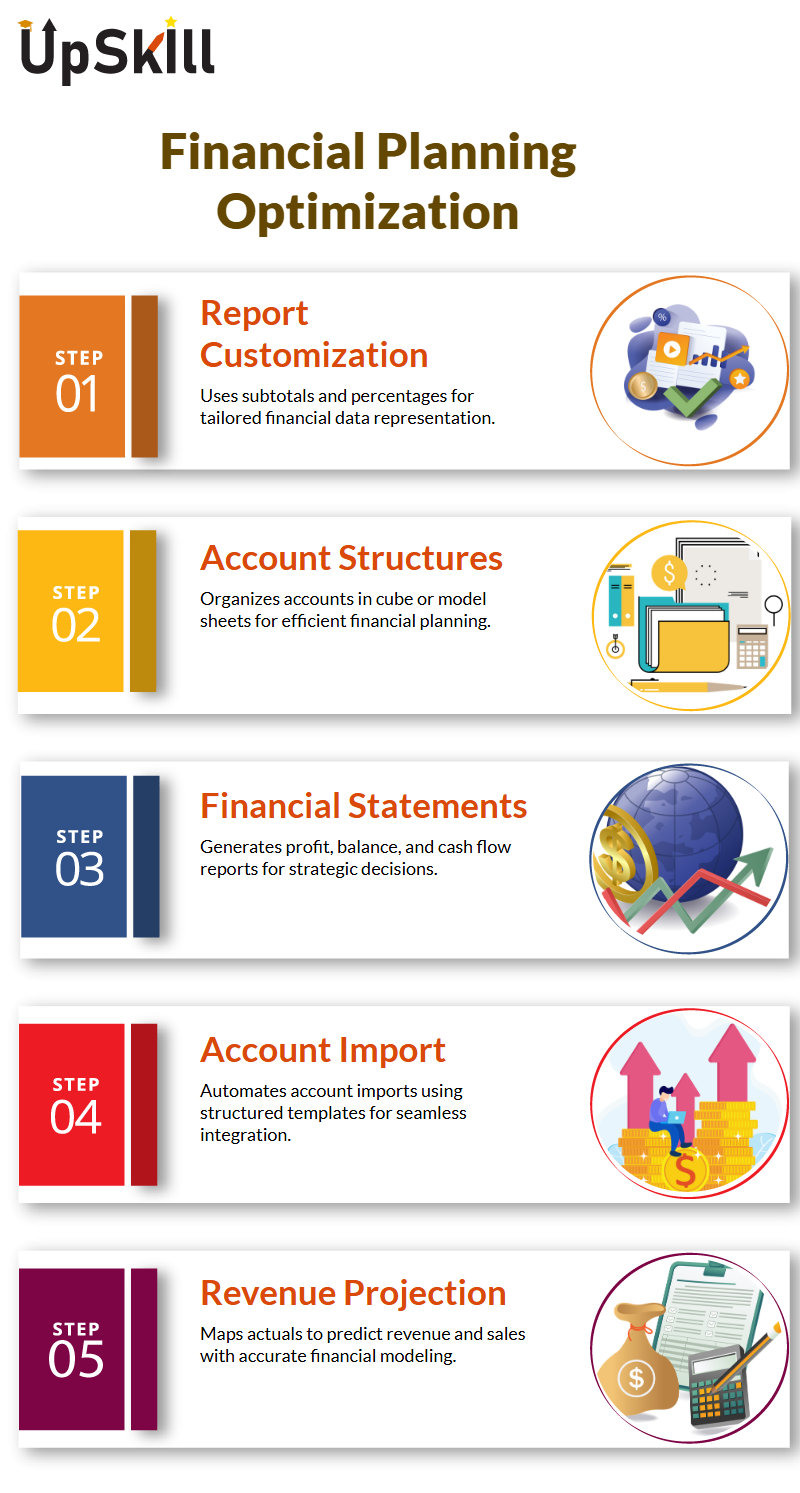
Writing of Formulas in Workday Adaptive Planning
Writing formulas If you have had questions on how assorted models in Workday Adaptive Planning are related, then this add-space the session will be fine for you.
We construct everything from the ground up as each model corresponds to another to make a smooth data flow.
Typically, model linkage in Workday Adaptive Planning is used for account referencing.
For prototype, in Workday Adaptive Planning, you can build a tradition account that connects different components inside of your model.
Authorize’s look at how these accounts affect the profit & loss statement. Workday Adaptive Planning Course in Bengaluru helps in such inter-model linkages and custom formulas.
Driver-Based Models in Workday Adaptive Planning
A “driver-based model” refers to the models in Workday Adaptive Planning where the data moves between models.
To organize planning data, this step is an important one. Workday Adaptive Planning gives us the option of connecting the sheets,’ thus lead to the right decision.
Should you make another calculated account, say a metric account, Workday Adaptive Planning will process it differently than standard accounts.
It won’t add up the percentages, but it will roll up the figures correctly by capitalizing on a structured strategy.
Fabricate Models in Workday Adaptive Planning
We will concentrate on the processes of data integration in Workday Adaptive Planning during two classes from the get-go.
We discuss manual data entry, imports, integrations, a range of types of sheets, simple formula writing, and driver-based models Workday Adaptive Planning guarantees that the data is sorted in a right way.
Workday Adaptive Planning Course in Bengaluru is ideal for learning these foundational processes.
In the first three stages, we have finished house three types of models: a standard sheet model, a cube model, and a salary model Each model has different objectives in Workday Adaptive Planning.
The regular sheet is used to log the time, stages, versions, and accounts while the cube model brings forward the dimensions for more in-depth analysis of data.
Data Insights with Cube
Collecting to know how Workday Adaptive Planning cube sheets are adding value to data analysis can be rather important.
A good exemplar of this is a cube sheet which gives the user the ability to interact with a lot of different angles, such as the profit from goods sold for the products, as well as the colors of the products or even the gender of the final customer.
According to the text, Workday Adaptive Planning cube sheets transport great results on the subject of easily performing assorted types of research.
Workday Adaptive Planning Course in Bengaluru will help users understand how to leverage cube sheets for deeper insight.
It’s also conjectured that determining cube sheets over regular sheets is a more favorable way to go for analysts who want to achieve the best kind of data segmentation in order to make augmented-informed choices
Why Model Sheets are Important in Workday Adaptive Planning
A Workday Adaptive Planning model sheet makes sure that Human Resources facts are handled completely.
Spreadsheet models can be used to adjust functions, salaries, and demographic alternatives if regular or cube sheets are not enough.
Workday Adaptive Planning Course in Bengaluru includes training on using model sheets for advanced HR and financial planning needs.
Workday Adaptive Planning will always keep the confidential salary data protected Employment restrictions mean that only the employees involved can see the details.
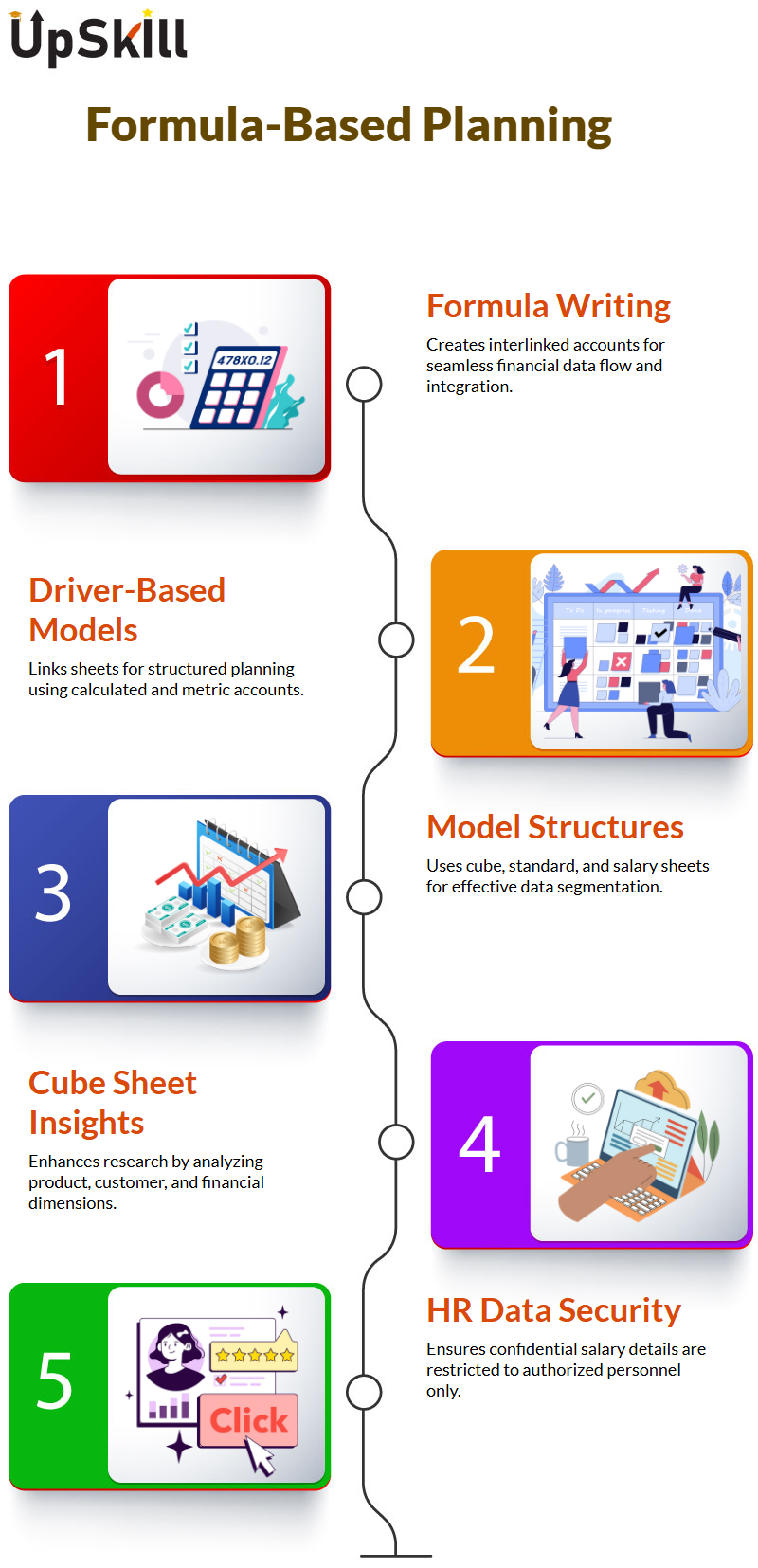
Use of Display Columns
Workday Adaptive Planning model sheets provide extra serviceability such as data entry specialties and display columns.
Workday Adaptive Planning is thus made much superior by these features.
First, if we ponder Adaptive Planning (Formerly Workday Adaptive Planning), the system automatically calculates Table Salary Components: Plain Pay, Bonus, and Total salaries, and each salary component can be displayed dynamically.
This is a progress from the traditional way of doing things and gives a transparent picture of the financial status.
Cognizance Workday Adaptive Planning
For any organization, retaining assured and suitable access to vital financial data is key.
Workday Adaptive Planning is the solution that comes with a managed method to guarantee only the subjects entitled can have access to specialty sheets Suppose there are 100 employees and only five of them are the HR team and have to work with the salary computation model.
The remaining 95 will of course not be able to access this sheet. What is the distinctive aspect of Workday Adaptive Planning?
Can the sheet owners be the leader or manager via a level-assigned sheet or user-assigned sheet? You can answer that by sympathy their definite use examples.
Workday Adaptive Planning Course in Bengaluru explains the difference between level-assigned and user-assigned sheets and their practical applications.
If we have to limit access according to positions in the organization, Workday Adaptive Planning furnishes us with level-assigned sheets, when we have to specify the access that is given to users that have been recognized by the system, we go in for user-assigned sheets.
Setting Up Workday Adaptive Planning Sheets
Working on Workday Adaptive Planning, we have planned a payroll model and gave permissions according to positions This implies that the data can be seen only by users in some provinces, such as the USA Surrounded by the USA.
We manually choose which places we want to grant access to, e.g., New York, Philadelphia, and Chicago, leaving out the relaxation of the employees outside these cities.
With user-assigned sheets, in a similar string to access to those who are assigned, a few users only will have it by permitting the view to be given to the five HR employees, we assure that the confidential payroll data inside.
Workday Adaptive Planning is safe Once we interpret a sheet to be user-assigned; the access will be allocated to only those that are there in the list.
Workday Adaptive Planning Course in Bengaluru covers how to set permissions at geographic and user levels effectively.
Views and Permissions in Workday Adaptive Planning
Among the issues faced by Workday Adaptive Planning is that keeping different users glancing at only what they need to see and also verifying security are easy to cope with at the same time.
We do not want to craft separate sheets for each team; thus, we decide to use templates. The templates are set up in a way that IT, HR, and finance are able to view only essential columns, while the break of the data is still unavailable.
We are additionally granted the authority to adjust reports Dashboards, and so on are capable of controlling the degree of visibility by, for demonstration, the finance department solely have access to pay-related columns, while the IT department retrieves operational data.
Workday Adaptive Planning is a tool that presents users’ access structures according to predetermined policies to avoid causing data leakage risks.
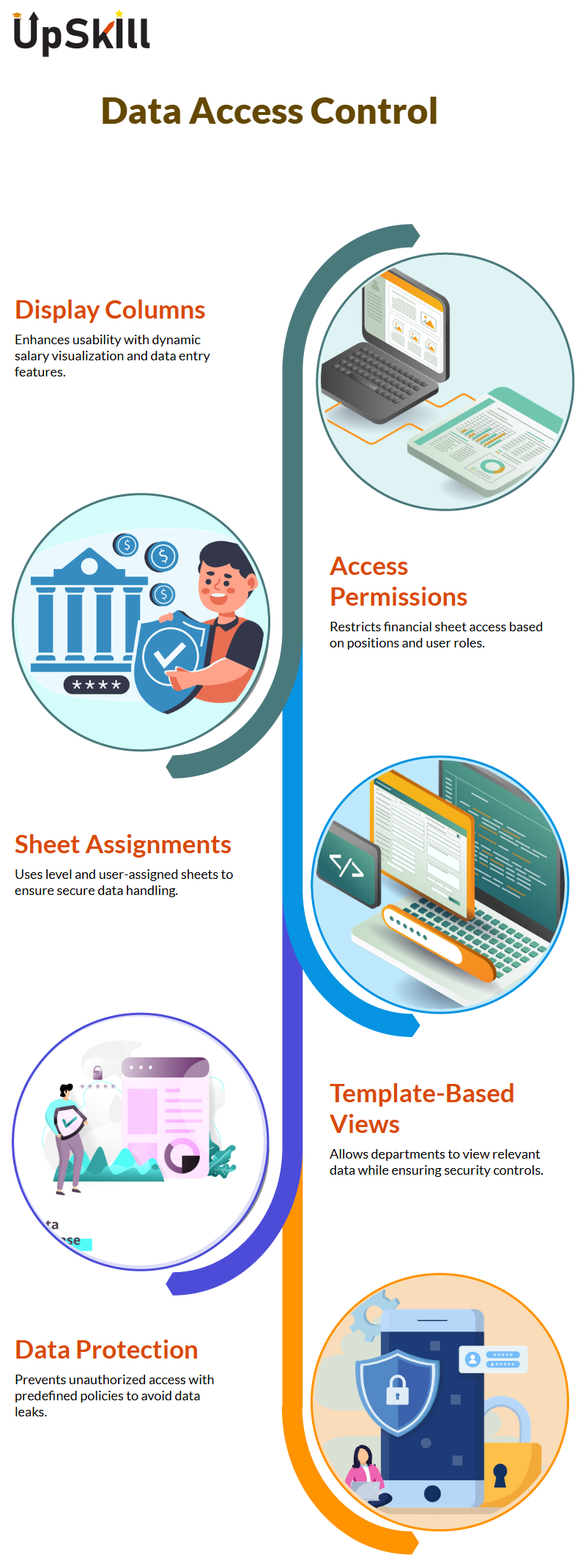
Workday Adaptive Planning Security Features
Workday Adaptive Planning comprises a line of defense to establish data visibility control and protection from unauthorized access.
In case we are required to restrict access to the certain employee data, for representation, not to display the details of contracts, we get this through security settings where Admins control column visibility, this way guarantee that users only obtain what they really need.
Also, Workday Adaptive Planning Course in Bengaluru authorizes role-based permissions where through the user groups (e.g. ‘Admin Users’ or ‘Finance Users’) we permit a perfect process of access management Instead of granting permissions one by one, we easily set group access and assure data security without any hassle.

